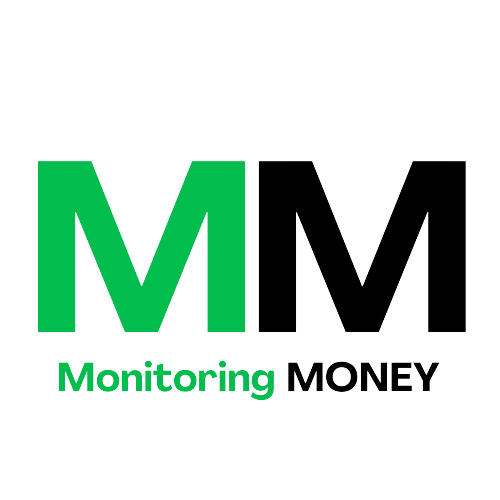The SMART goals framework provides a structured approach to setting and achieving your objectives, ensuring that your goals are Specific, Measurable, Achievable, Relevant, and Time-bound. Setting clear and actionable goals is crucial for personal and financial success. However, many people struggle with goal setting because their goals are often vague and unrealistic. In this article, we’ll dive into each component of the SMART criteria, explain how to apply it to your financial goals, and provide tools and resources to help you stay on track.
Understanding SMART Goals
Specific

A specific goal is clear and unambiguous, with no room for misunderstanding. When your goals are specific, you know exactly what you want to achieve, why it’s important, and how you plan to accomplish it. To make a goal specific, you should answer the following questions:
- What do I want to accomplish?
- Why is this goal important?
- Who is involved?
- Where is it located?
- What resources or constraints are involved?
For example, instead of setting a vague goal like “save money,” a specific goal would be “save $5,000 for an emergency fund in a high-yield savings account within the next 12 months.”
Measurable

A measurable goal allows you to track your progress and determine when you’ve achieved it. Measurable goals typically include specific criteria for measuring progress, such as quantity, frequency, or milestones. This component helps you stay motivated by showing you tangible evidence of your progress. Consider these questions to make your goal measurable:
- How much?
- How many?
- How will I know when it’s accomplished?
For instance, “save $5,000” is measurable because you can track your savings and know when you reach the target amount.
Achievable

An achievable goal is realistic and attainable given your current resources and constraints. While it’s important to challenge yourself, setting goals that are too ambitious can lead to frustration and demotivation. To ensure your goal is achievable, consider:
- Do I have the resources and skills to achieve this goal?
- What are the potential obstacles, and how can I overcome them?
For example, if you want to save $5,000 but only have $100 left each month after expenses, you may need to adjust your goal or find ways to increase your income.
Relevant

A relevant goal aligns with your broader objectives and long-term plans. It should matter to you and be worth the effort. To determine if your goal is relevant, ask yourself:
- Does this goal align with my overall financial plan?
- Is this the right time to pursue this goal?
- Does this goal align with other priorities in my life?
For example, saving for an emergency fund is relevant because it provides financial security and peace of mind.
Time-bound

A time-bound goal has a clear deadline, creating a sense of urgency and prompting you to act. Setting a timeframe helps you stay focused and motivated, ensuring that you make consistent progress. Consider these questions to make your goal time-bound:
- When do I want to achieve this goal?
- What can I do today, next week, and next month to make progress?
For instance, setting a goal to save $5,000 within 12 months provides a clear timeframe and helps you plan your savings accordingly.
Summary Table: SMART Goals Criteria
| Criterion | Description | Example Questions |
|---|---|---|
| Specific | Clear and precise | What do I want to accomplish? |
| Measurable | Quantifiable and trackable | How much? How many? |
| Achievable | Realistic and attainable | Do I have the resources and skills? |
| Relevant | Aligned with broader objectives | Does this goal align with my financial plan? |
| Time-bound | Defined deadline | When do I want to achieve this goal? |
Tools and Resources for Setting and Achieving SMART Goals
Achieving your SMART goals requires consistent effort and the right tools to track your progress. Here are some recommended tools and resources to help you stay on track:
Useful Tools Table
| Tool | Description | Link |
|---|---|---|
| Mint | Budgeting and expense tracking | Mint |
| YNAB | Budget creation and management | You Need A Budget |
| Personal Capital | Net worth tracking and investment management | Personal Capital |
| Acorns | Automated spare change investing | Acorns |
| Betterment | Robo-advisor for automated investing | Betterment |
| PocketGuard | Spending tracking and savings insights | PocketGuard |
| Goalify | SMART goal setting and tracking | Goalify |
| SmartSheet | Project management and goal tracking | SmartSheet |
| Trello | Visual project management and task tracking | Trello |
| Habitica | Gamified goal and habit tracking | Habitica |
Applying SMART Goals to Personal Finance
Saving for an Emergency Fund

Let’s take the example of saving for an emergency fund and break it down using the SMART criteria.
Specific: I want to save $5,000 in a high-yield savings account for an emergency fund. Measurable: I will save $417 each month for the next 12 months. Achievable: I will cut back on dining out and use that money for savings. Relevant: This goal aligns with my priority of building financial security. Time-bound: I want to achieve this goal within 12 months.
By setting this SMART goal, you have a clear plan and timeline, making it easier to stay motivated and track your progress.
Paying Off Debt

Another example could be paying off credit card debt. Using the SMART criteria, you might set a goal like this:
Specific: I want to pay off $3,000 in credit card debt. Measurable: I will pay $250 each month towards my credit card balance. Achievable: I will create a budget to free up $250 each month by reducing discretionary spending. Relevant: This goal will reduce my financial stress and improve my credit score. Time-bound: I aim to pay off my debt within 12 months.
Example Table: Financial SMART Goals
| Financial Goal | Specific | Measurable | Achievable | Relevant | Time-bound |
|---|---|---|---|---|---|
| Emergency Fund | Save $5,000 | $417/month for 12 months | Cut back on dining out | Provides financial security | Within 12 months |
| Pay Off Debt | Pay off $3,000 credit card debt | $250/month for 12 months | Create a budget to free up $250 | Reduces financial stress | Within 12 months |
Staying Motivated and Overcoming Obstacles
Achieving SMART goals requires persistence and motivation. Here are some strategies to help you stay on track:
– Visualize Your Success
Visualizing your success can be a powerful motivator. Imagine how achieving your goal will improve your life and financial situation. Create a vision board with images and quotes that represent your goal and place it somewhere you’ll see it daily.
– Seek Support
Share your goals with friends, family, or a financial advisor. Having a support system can provide encouragement, accountability, and valuable feedback. Consider joining a financial community or forum where you can share experiences and learn from others.
– Use Positive Reinforcement
Reward yourself for making progress toward your goal. Positive reinforcement can help you stay motivated and reinforce good habits. The reward doesn’t have to be extravagant; it can be something simple like a favourite treat or a relaxing activity.
– Break Goals into Smaller Steps
Large goals can be overwhelming, so break them down into smaller, manageable steps. This approach makes the goal seem more attainable and allows you to celebrate small victories along the way.
– Adjust Goals as Needed
Life is unpredictable, and sometimes goals need to be adjusted. If you encounter obstacles or your circumstances change, don’t be afraid to reassess and modify your goals. The key is to remain flexible and adaptable.
Setting goals is the first step in turning the invisible into the visible.
– Tony Robbins
Conclusion
Setting SMART goals is a powerful way to achieve financial success. By making your goals Specific, Measurable, Achievable, Relevant, and Time-bound, you create a clear and actionable plan. Use the tools and resources provided to stay on track, and remember to celebrate your progress along the way. Whether you’re saving for an emergency fund, paying off debt, or investing for the future, SMART goals can help you turn your financial dreams into reality.

Call to Action: Start setting your SMART goals today using the tools and resources mentioned in this article. Share your goals with us in the comments below and let us know how we can help you achieve financial success.




